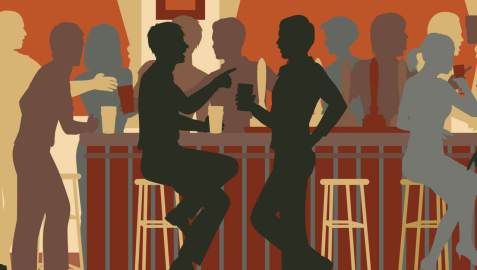When I worked at Oticon, one of the world’s largest hearing aid manufacturers, we were acutely aware of the strong negative connotations associated with hearing aid use, especially among baby boomers who are starting to lose their hearing but still feel young and active. In the past, manufacturers have tried to help boomers overcome this stigma by making smaller hearing aids (even invisible, inside the ear canal), more jewelry-like, disposable, and connected to smartphones. None has succeeded because, ultimately, 65-year-olds want to show off the same products as 30-year-olds, not 80-year-olds. I concluded that there is only one company capable of removing the stigma associated with hearing aid use, and it’s neither an established hearing aid manufacturer nor a “disruptive” startup. It’s Apple.
The new Apple AirPods have the potential to fuse traditional headphones with hearing aids. The baby boomer who refuses to wear hearing aids will see people of all ages wearing AirPods and will want a pair for himself. And by the way, what if those AirPods could also amplify speech and cancel noise? For someone needing amplification only in certain situations, the AirPods would be ideal. There is no longer a need to be discreet or camouflage the hearing aids. Boomers will wear their AirPods proudly!
As the American population ages, there is going to be epidemic hearing loss. In my opinion, Apple identified this untapped market years ago, when they sought out a partner in the hearing aid industry. In 2014, they teamed up with GN ReSound to bring to market the LiNX, the world’s first Made for iPhone (MFi) hearing aids. The LiNX used a variant of Bluetooth Low Energy wireless communication that offered direct audio streaming from an iPhone or iPad, allowing wearers to use their hearing aids like wireless headphones to talk on the phone or listen to music, without any intermediate body-worn devices. I believe Apple tried to gain as much knowledge and experience from the hearing aid industry as it could, with the goal of launching its own hearing-aid-like product in the future.
And why not? Apple has several unique competitive advantages: a strong image, significant smartphone market share and last, but not least, a multitude of Apple Stores around the world.
Imagine you are a baby boomer with a slight hearing loss. You can visit the nearest Apple Store and be helped by a friendly Apple Genius – trained in understanding the anatomy of the ear and potential fit problems – sits you down in a sound booth, determines your “hearing number”, even takes an impression of your ear canals. Assuming Apple puts 3D printers in their stores, you walk away with AirPods customized for your hearing that will solve the challenge of your declining hearing ability, stay in your ear comfortably, and look just like all the other young people listening to music or talking on the phone.
If you think that baby boomers with hearing loss are a small group not worthy of Apple’s attention, consider that the poor fit of standard earbuds affects people of all ages, as no two ears are alike. Making earbuds more comfortable would increase the amount of time people could tolerate to wear them, opening up possibilities for receiving information – emails, text messages, and other notifications – via the auditory channel and further blurring the line between consumer electronics and hearing aids. That’s my vision for the potential of the AirPods, and hearing impaired people of all ages stand to benefit.

